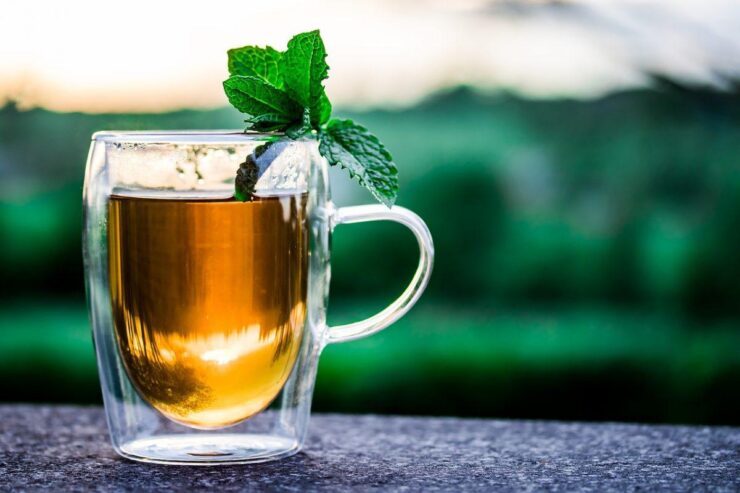A variety of plants’ leaves, flowers, stems, and roots are used to make herbal tea. It has been valued for its medicinal qualities for ages and is still significant to many cultures today.
According to Thanks A Bunch Florist, herbal tea has grown in popularity recently due to its various health advantages, which include enhancing immunity, assisting digestion, fostering relaxation, and offering antioxidant characteristics.
Health Benefits of Herbal Tea
Herbal tea has many health benefits that are worth exploring. Drinking this can help boost your immune system, aid digestion, promote relaxation, and provide antioxidant properties. It can also help with weight loss by boosting metabolism and suppressing appetite.
One of the most significant benefits of herbal tea is its ability to boost the immune system. Many herbs have immune-boosting properties, including echinacea, elderberry, and ginger. Drinking herbal tea made from these herbs can help prevent illness and promote overall health.
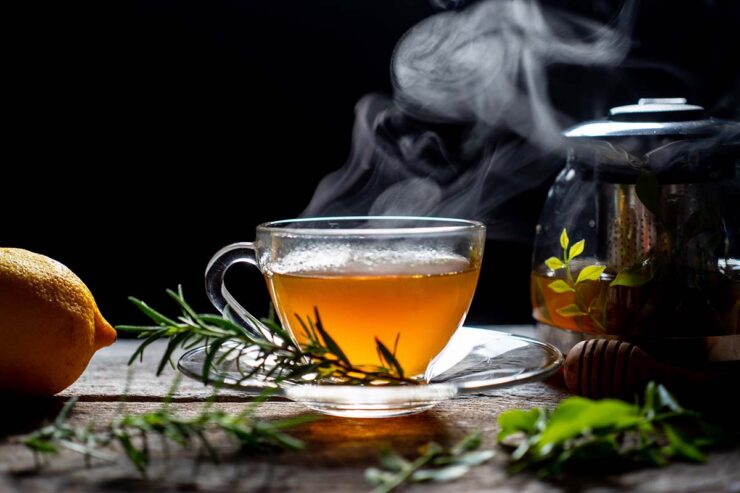
Another benefit is the ability to aid digestion. Many herbs have digestive properties, including peppermint, ginger, and chamomile. Drinking herbal tea made from these herbs can help soothe an upset stomach and promote healthy digestion.
Herbal tea is also known for its calming and relaxing properties. Many herbs, such as lavender and chamomile, have soothing properties that can help reduce stress and anxiety. Drinking herbal tea made from these herbs can help promote relaxation and improve sleep.
Last but not least, drinking herbal tea is a great way to receive antioxidants, which protect your cells and lower your chance of developing chronic diseases. You can locate many antioxidant-rich herbs, such as rosehip and green tea, adding to your body’s defenses against free radicals.
The Difference between Fresh and Dried Herbs
You have the option of using fresh or dried herbs while creating herbal tea. Each has benefits and drawbacks.
The flavour of fresh herbs is more vivid and savoury than that of dried herbs. They may, however, cost more and have a shorter shelf life. Herbs that are still fresh should be stored correctly and used as soon as possible after being picked or purchased.
Dried herbs have a longer shelf life and are generally less expensive than fresh herbs, though they may lack flavour intensity and contain fewer health benefits.
How to Choose Fresh Herbs
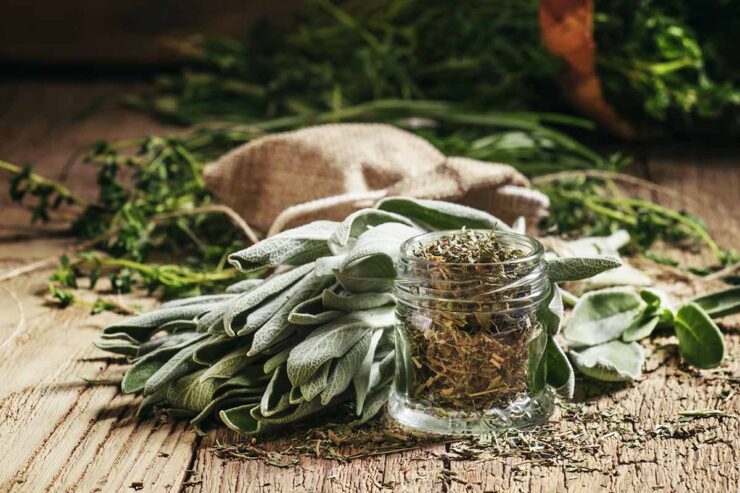
Making delicious and healthful herbal tea starts with selecting fresh herbs. There are numerous herbs available. However, it might be difficult to determine which herbs to use with so many choices available.
Firstly, think about your unique taste preferences as well as the precise health advantages you want from your herbal tea. For instance, you might choose peppermint or ginger if you want to improve your digestion. Contrarily, chamomile or lavender can be a better choice if you’re looking to relax and relieve stress.
Additionally, fresh herbs that are in season and easily accessible must also be chosen. By doing so, you can support local farmers and producers while also ensuring that the herbs are at their freshest and most flavorful. If you’re not sure which herbs are in season, ask your local florist or a Melbourne florist for guidance.
While choosing fresh herbs, make sure to look for any signs of damage or wilting. Choose herbs that are fragrant, have bright colours, and are free of dark patches or yellowing leaves. Also, wherever possible, use organic herbs because they are grown without the use of harmful pesticides or chemicals.
Preparing the Flowers and Herbs

It’s time to get your flowers and herbs ready for steeping once you have them. Gently pat them dry after rinsing them in cold water to get rid of any dirt or debris. Remove the petals and stems from any flowers you plan to use, then slice the petals up. You have two options: chopping or tearing up herbs.
Steeping the Tea
Boil some water in a pot or kettle to make the tea. Pour the heated water into a teapot or in a heat-resistant glass container. According to the recipe you are using, mix the prepared flowers and herbs with the water and let them steep for 5 to 10 minutes. Use a cheesecloth or tea strainer to remove the flowers and herbs once it has brewed.
Sweeteners and Additional Flavours
You can drink your herbal tea plain, or you can flavour it more or add a little sweetness to it. To sweeten it, you can use stevia, honey, or maple syrup. Additionally, lemon juice, ginger, or mint leaves can also be added for taste.
Types of Herbal Teas You Can Make with Fresh Herbs and Flowers
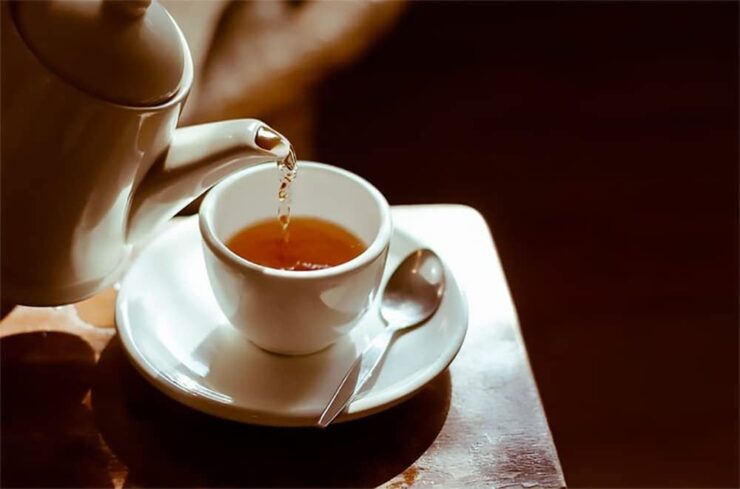
You can prepare a variety of herbal teas with fresh flowers and herbs. Here are a few recipes to get you started:
Chamomile Tea
It is well known that chamomile tea has calming and unwinding qualities. It can ease anxiety and encourage restful sleep.
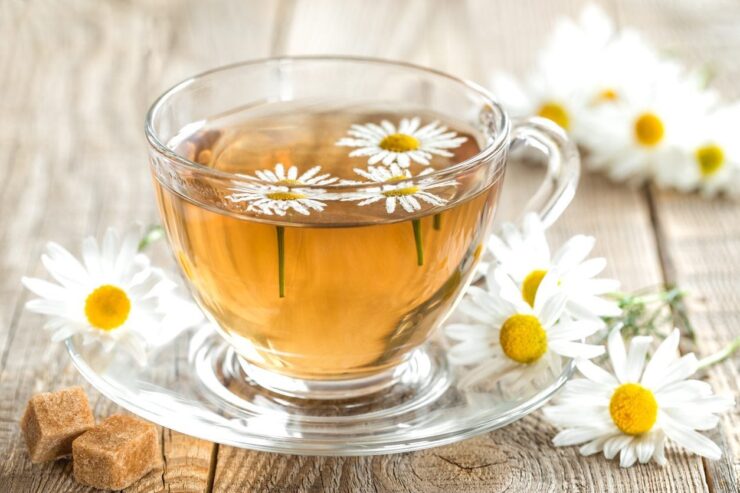
Ingredients:
- 1 tbsp fresh chamomile flowers
- 1 water cup
Instructions:
- In a tea kettle or saucepan, boil the water.
- Fill the planter with fresh chamomile flowers.
- Give it about five minutes to steep.
- Remove the chamomile tea’s blooms with a strainer.
- Enjoy after serving.
Lavender Tea
Another type of tea with relaxing effects is the one made with lavender. It can ease tension and encourage restful sleep.
Ingredients:
-
- 1 teaspoon of fragrant lavender flowers
- 1 water cup
Instructions: The procedure is pretty much the same as with chamomile.
Conclusion
Fresh flowers and herbs can be used to produce herbal tea, which is a tasty and healthful beverage. You can maximise the therapeutic effects of your tea and reap all of its health advantages by utilising fresh herbs. Herbal tea is a fantastic way to stay hydrated and enhance your general wellbeing that you can incorporate into your daily routine.

